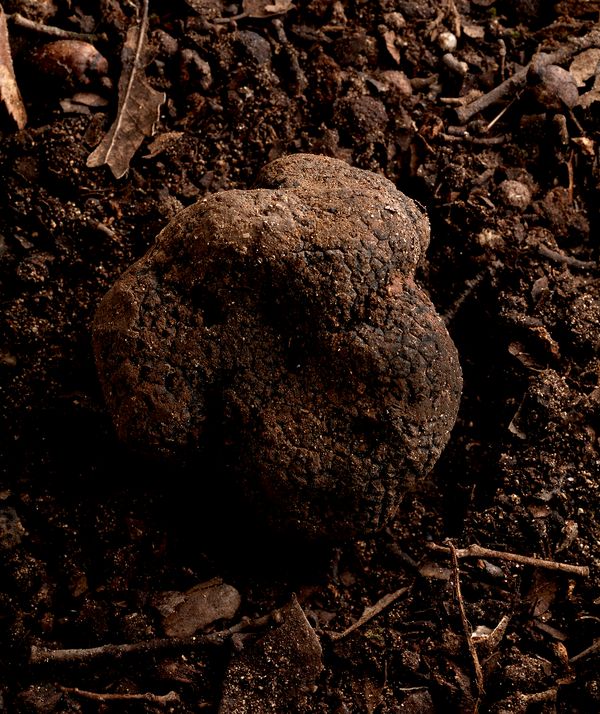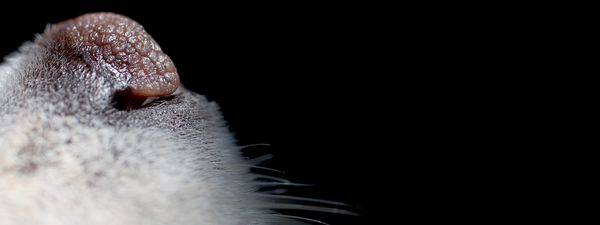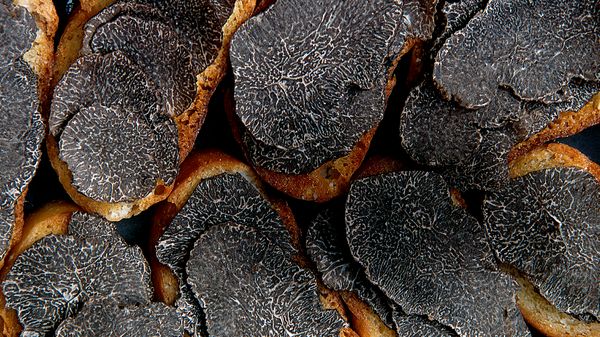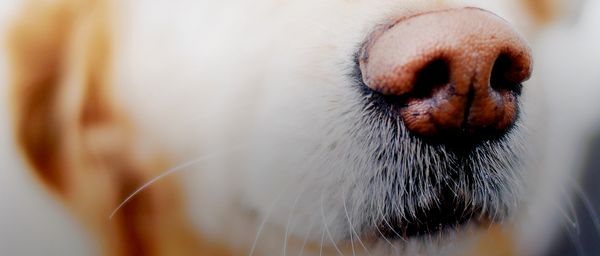
THANKS TO THEIR SENSITIVE SENSE OF SMELL, DOGS ARE IDEAL FOR HUNTING TRUFFLES. WE VISIT A TRUFFLE EXPERT IN CENTRAL GERMANY.

Tastes like...
The taste experience of truffles is notoriously hard to describe, with some opting for comparisons to vanilla and nuts while others talk of garlicky notes.
Steep prices
Fittingly, at a kilogram price of up to 9,000 euros, the cost of even a 20 gram serving is enough to leave most people speechless. There are lots of different species which sprout at various times of the year – and not just in the warm climates of France, Italy and Spain. Summer truffles can be found north of the Alps in Germany – “in quite considerable quantities”, confirms Fabian Sievers. The 45-year-old has been cultivating Tuber in the Leine Uplands, a hilly region between Hanover and Göttingen in Lower Saxony, for six years.
The right nose
The best way to find them is by smell – using dogs. Woopee is a truffle hound who has now been helping his master find truffles for five years. She goes quite wild for the delicacy in the undergrowth, and hills of the Leine Uplands have just the kind of sparse woodlands interspersed with clearings that truffle fungi love. Which begs the question as to why hardly anyone finds them. The answer is simple: truffles grow underground and only trained dogs can pick up their scent.

Going underground
All of a sudden, Woopee gets excited and starts digging wildly. She doesn’t have to go very deep because the summer truffle currently in season grows just below ground level. Sievers has some trouble getting his dog to relinquish the black lump: “We have a deal,” he explains: “If the truffle is so small that she can get it out with just one paw, I let her keep it.” The summer truffle now in her muzzle, however, is one their agreement requires her to give up. In return, his furry friend gets a lot of praise – and a doggy treat.

Wild pigs
While Woopee keeps snuffling, Sievers explains how what used to be a pig’s job became dogs’ work. “The first professional truffle hunters were farmers out in the woods with their pigs. Since ripe truffles exude aromas which are similar to those of boars’ pheromones, sows would burrow into the truffle groves like mad.” The problem is that pigs are thick-set and hard to train; they trample flora and fauna, and for that reason have long been replaced by dogs like the Lagotto Romagnolo, which is ideal for hunting truffles.
Tree expert
Sievers has used his knowledge of the trees with which fungi enter into mycorrhiza to build up his truffle farm, planting up his two hectares of lightly inclined meadowlands with a loose succession of hazelnut, hornbeam, beech and oak trees; a few fruit trees – wild cherry and apple – are there, too. “Truffles prefer damp, chalky soil with pH values of seven or more,” says Sievers.
Forbidden fungus
Just as in nature, it takes several years for the relationship between tree and fungus to bear fruit. Fabian Siever needs a lot of knowledge and plenty of patience – but it will be worth it in the end. Lots of people love the smell and taste of truffles; they are often cited as aphrodisiacs, too, which contributes to their high market value. The most important factor, however, is the lack of truffle cultivation in Germany to date: “Currently, every ounce of truffle served in restaurants in full accordance with the law will have been imported.”

All natural
Good prospects for Fabian Sievers. He is confident of being able to harvest 20 kilos of truffles per hectare – and quite possibly closer to 40 or 60 kilos. He wouldn’t recommend it to anyone on the lookout for a get-rich-quick scheme, though, because it is simply too slow and too difficult. He’s not in it for the money in any case; it’s the natural aspect that fascinates him. “In my view, every piece of monoculture farmland that gets turned into truffle groves is an improvement because it's recreating the balance of the natural world.”




